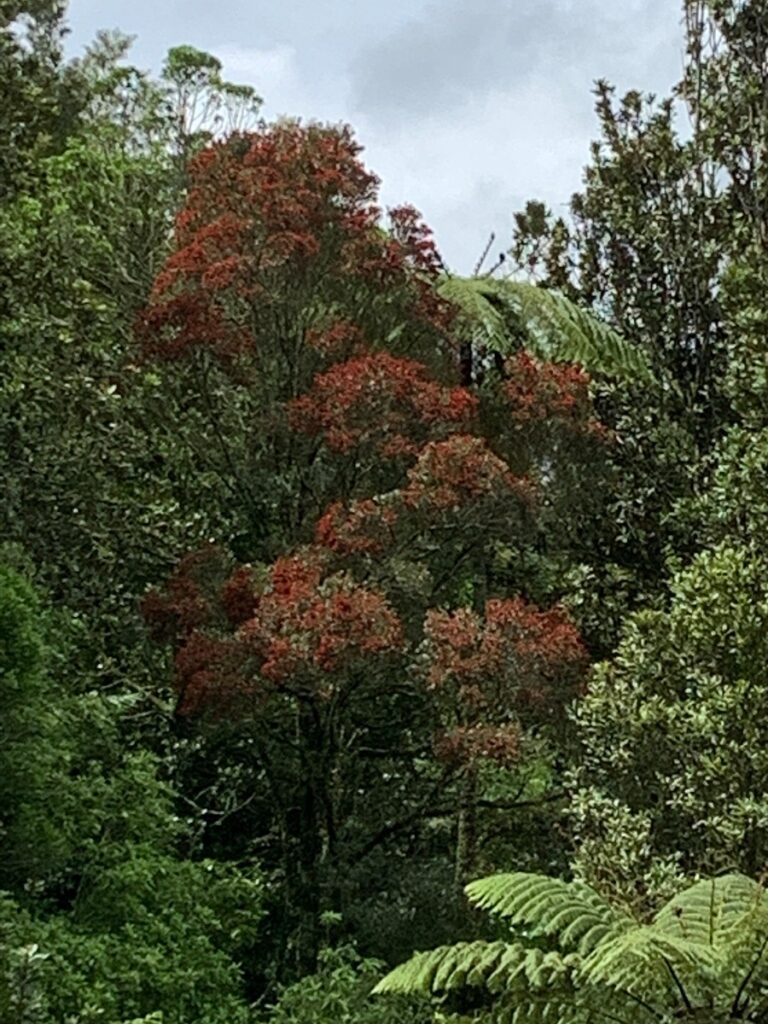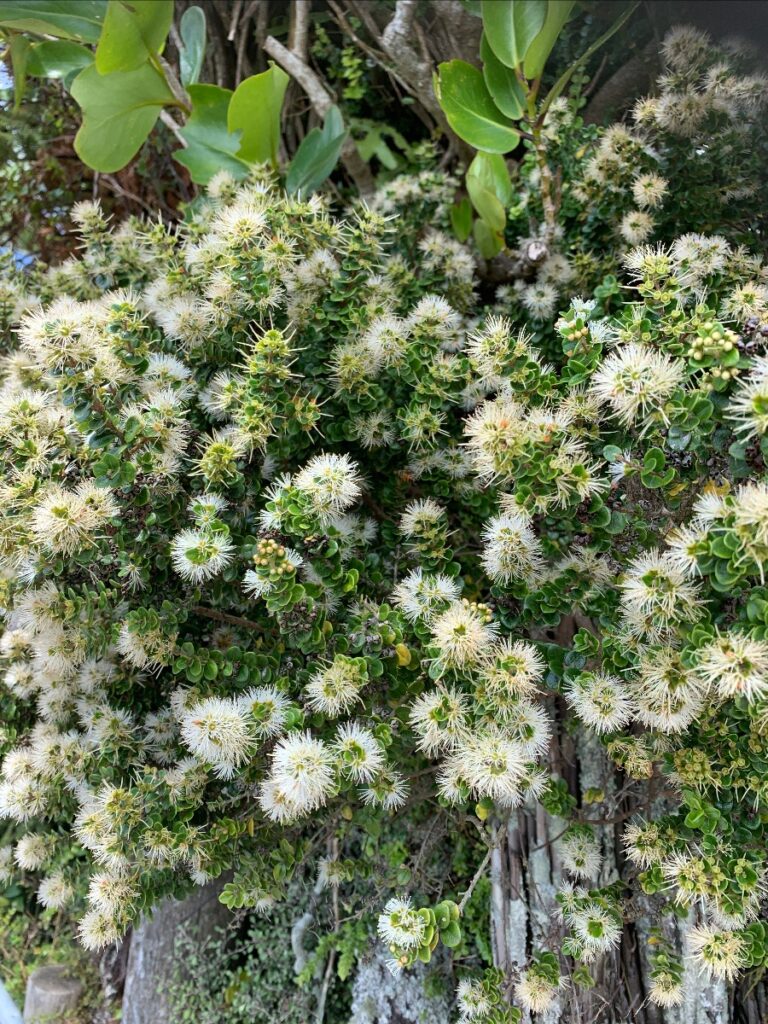Based on the number of northern rātā logs and stumps scattered throughout the Ōtanewainuku forest, it’s evident that Ōtanewainuku was a significant northern rātā forest at some stage in its history. To our knowledge, there is only one living tree left in the area. We first photographed it in flower in 1995 and it has flowered 3 times since then. A flowering of once every 8 years or so. Last December we witnessed a spectacular northern rātā flowering.
Northern rātā is most at risk from possum browse. Rātā trees cannot tolerate sustained possum browsing. A mature tree can be killed in three years with intensive browsing and even young trees, although they can survive for longer, will eventually die if browsed regularly. Native birds benefit from rātā, but as possum numbers increase the threat to native birds and to rātā has also grown.
Ōtanewainuku also supports a large amount of white rātā (Akatea). It flowers from late January to mid-February, but walking through the forest you usually don’t see it as it’s up on the tops. However, at locations where you can look into the forest (e.g. along Seales road on the Pendergrast driveway) you can get glimpses of masses of white flowers on the tops of many trees. White rātā flowers every year but some years are more prolific than others. 2022 is a mast year for white rātā and once you recognise it, you realise just how spectacular the flowering is for this year.


